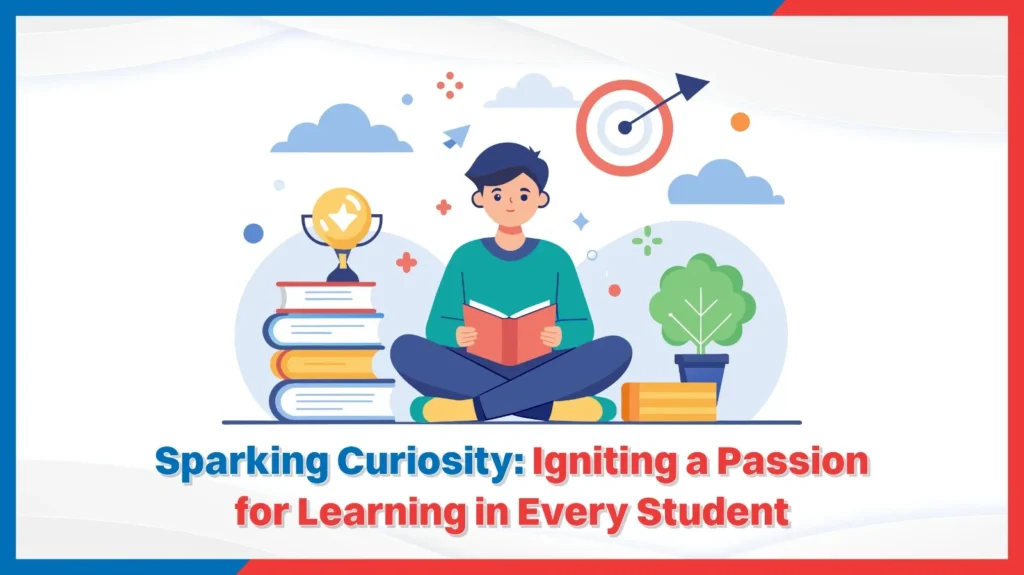In an era where information is abundant but attention spans are short, the real challenge for educators isn’t just to teach—it’s to ignite curiosity. And nowhere is this more critical than in science education. Traditional textbook-based learning often struggles to inspire engagement, especially when abstract concepts feel disconnected from the real world.
In this article, we’ll explore what Phenomenon Based Science is, why it matters, how it changes the classroom experience, and how it helps build scientific thinkers ready for the challenges of tomorrow. At Verified Campus, we believe every learner deserves to be curious—and that curiosity is the fuel that powers lasting, meaningful learning.
What Is Phenomenon Based Science?
Phenomenon Based Science is an instructional approach where learning starts with a compelling, observable event—a phenomenon. Instead of memorizing facts in isolation, students investigate the science behind what they see and experience in the world.
A phenomenon could be:
-
A tornado forming in the sky
-
A spoon getting hot in a cup of tea
-
A plant growing toward sunlight
-
Ice melting on one surface but not another
Students begin by asking questions about the phenomenon and then dive into exploration, experimentation, and research. Phenomenon Based Science makes students active participants in learning, turning curiosity into inquiry, and inquiry into understanding.

Why Traditional Science Instruction Falls Short
In conventional classrooms, science often begins with vocabulary or predefined learning outcomes. This can result in:
-
Passive learning
-
Disconnected facts
-
Memorization over understanding
-
Limited student engagement
Phenomenon Based Science flips this model. Instead of giving students answers first, it challenges them to ask the right questions. This method aligns with how real scientists work and encourages deeper learning.
Core Principles of Phenomenon Based Science
To understand the full impact of Phenomenon Based Science, it’s important to recognize its foundational principles:
1. Student-Led Inquiry: Students lead the investigation. They observe, question, test, and draw conclusions—often in groups.
2. Real-World Relevance: Phenomena are rooted in real-life observations. This bridges the gap between classroom theory and lived experience.
3. Cross-Disciplinary Thinking:
Science doesn’t happen in silos. Phenomenon Based Science often integrates biology, chemistry, physics, and even math or social studies to solve a single problem.
4. Evidence-Based Reasoning: Students are encouraged to construct explanations based on observation, data, and analysis—just like real scientists.
5. Collaboration and Communication: Much of Phenomenon Based Science happens through group work, allowing students to practice teamwork and scientific communication.

How Phenomenon Based Science Ignites Curiosity
Curiosity is a natural driver of learning, and Phenomenon Based Science is built around this. Here’s how it fosters a curious classroom:
-
Authentic Problems: Students care more when they can relate what they’re learning to the world around them.
-
Hands-On Investigation: Students learn by doing, not just by listening or reading.
-
Open-Ended Inquiry: Unlike traditional labs with fixed outcomes, allows multiple solutions and paths.
-
Ownership of Learning: Students become active constructors of knowledge rather than passive receivers.
Examples of Phenomenon Based Science in Action
Let’s break down a few real classroom examples that illustrate the power of Phenomenon Based Science:
1. Why Does a Hurricane Spin?
Phenomenon: Time-lapse satellite footage of a hurricane forming.
Concepts Explored: Air pressure, Coriolis effect, temperature, Earth’s rotation.
Skills Developed: Analysing weather data, using models, collaborative research.
2. Why Do Leaves Change Colour in Autumn?
Phenomenon: Photographs showing trees in different seasons.
Concepts Explored: Photosynthesis, pigments, climate.
Skills Developed: Scientific explanation, life science, long-term observation.
3. Why Does a Metal Spoon Get Hot in Hot Tea?
Phenomenon: Observation during a daily routine.
Concepts Explored: Thermal conductivity, heat transfer, material properties.
Skills Developed: Experimental design, real-world application of physics.
Each of these phenomena engages students, deepens understanding, and connects scientific content to real life—hallmarks of effective Phenomenon Based Science.
Benefits of Phenomenon Based Science
Here’s why educators and researchers are calling Phenomenon Based Science a game-changer in STEM education:
Increases Engagement: students are naturally curious when faced with a mystery or problem. Engagement soars.
Improves Critical Thinking: Open-ended investigations develop logic, reasoning, and argumentation skills.
Enhances Retention: Students remember concepts more effectively when they uncover them through personal discovery.
Supports All Learners: By starting with experience rather than abstract concepts, Phenomenon Based Science supports diverse learning styles and abilities.
Prepares for the Future: This approach mirrors real-world scientific practice, preparing students for careers in research, technology, engineering, and innovation.

Challenges in Implementing Phenomenon Based Science
While Phenomenon Based Science is highly effective, it’s not without challenges:
-
Requires More Preparation: Teachers must curate meaningful phenomena and design inquiry pathways.
-
Assessment Can Be Complex: Open-ended learning is harder to measure with traditional tests.
-
Needs Flexible Curriculum: Rigid curriculum structures may not allow time for extended investigations.
However, with proper training, collaboration, and school support, these challenges are entirely manageable—and the benefits far outweigh the barriers.
How Schools Can Implement Phenomenon Based Science Effectively
1. Start with Local Phenomena: Use natural, social, or environmental phenomena in the local area—making learning more tangible and relatable.
2. Train Teachers in Inquiry-Based Methods: Professional development is key. Educators need tools and models to guide students without controlling the process.
3. Integrate Across Subjects: Phenomena don’t fit neatly into one subject. Schools should promote cross-curricular units that mirror real-world complexity.
4. Use Technology and Tools: Simulations, video analysis, and data collection apps can enhance Phenomenon Based Science investigations.
5. Foster a Culture of Curiosity: Encourage questioning, risk-taking, and exploration as part of school culture—not just in science class.
Phenomenon Based Science and 21st Century Skills
Beyond academic content, Phenomenon Based Science nurtures vital 21st-century competencies:
-
Collaboration: Students work in teams to design investigations.
-
Communication: They present findings clearly and confidently.
-
Creativity: Exploring multiple solutions and using different tools.
-
Critical Thinking: Evaluating data, forming evidence-based arguments.
-
Digital Literacy: Using simulations, sensors, and digital tools for analysis.
This is not just science education—it’s future-ready education.

Conclusion: Excels at Phenomenon Based Science
At Verified Campus, we believe the most effective learning happens when students are engaged, curious, and challenged to think critically. That’s why schools embracing Phenomenon Based Science are at the forefront of 21st-century education.
The Best School in Dehradun stands out for its innovative use of Phenomenon Based Science in its science curriculum. By integrating real-world phenomena into lessons, encouraging inquiry-led learning, and supporting interdisciplinary projects, this school empowers its students not just to learn science.


